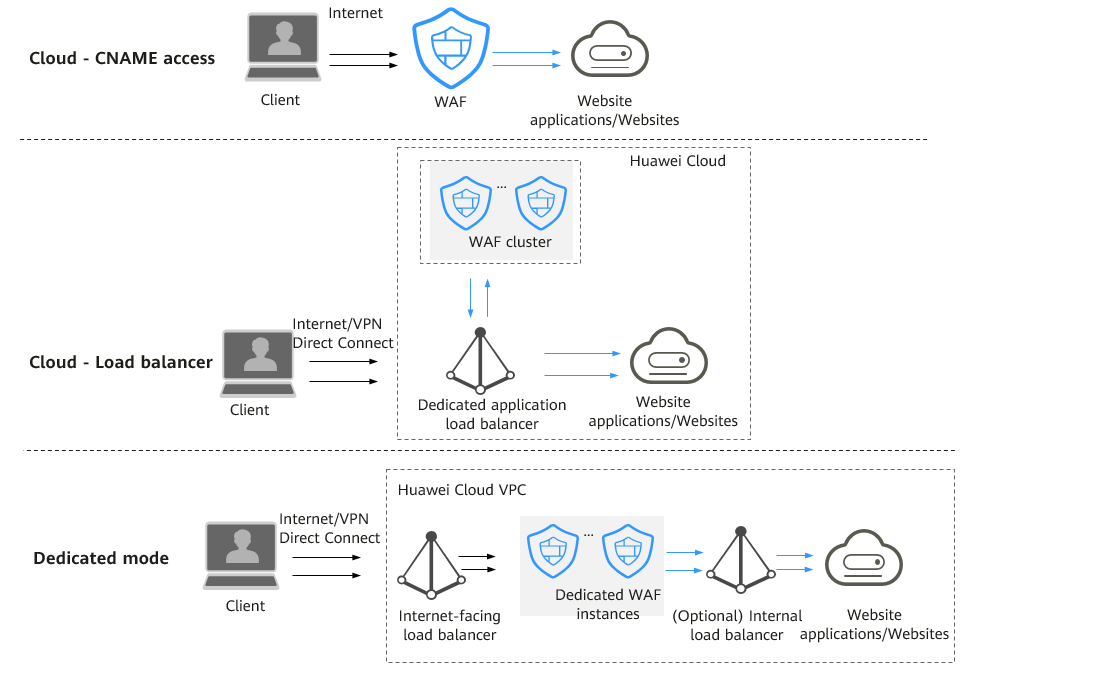Updated on 2025-07-04 GMT+08:00
WAF Modes
Description
Deployment architecture

Differences Between the Cloud and Dedicated Modes
Feedback
Was this page helpful?
Provide feedbackThank you very much for your feedback. We will continue working to improve the documentation.See the reply and handling status in My Cloud VOC.
The system is busy. Please try again later.
For any further questions, feel free to contact us through the chatbot.
Chatbot





